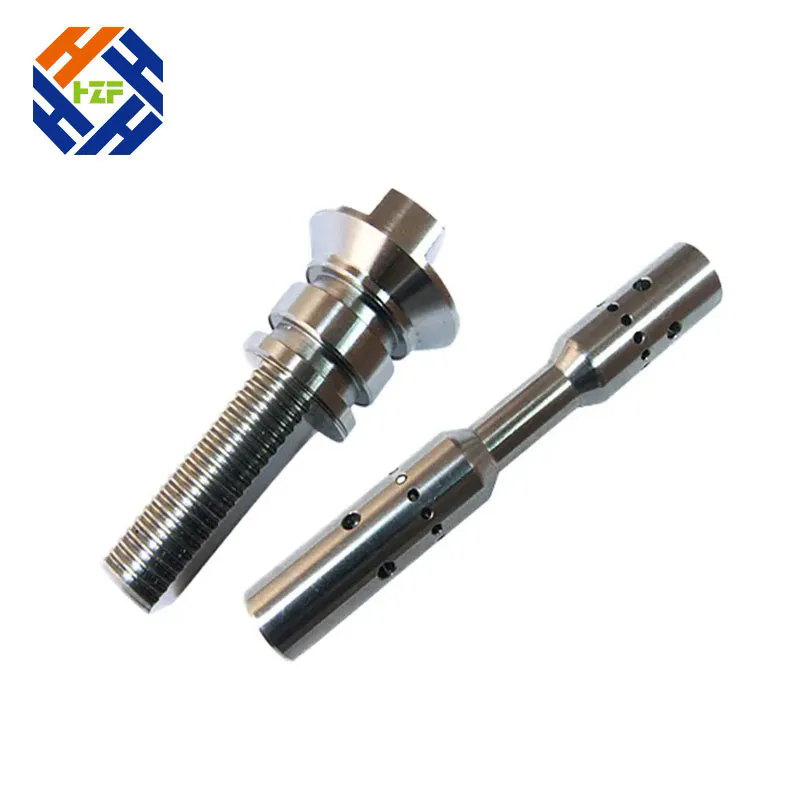CNC Machining Motor Drone Parts: Your Questions Answered
2024-10-30
CNC (Computer Numerical Control) machining has revolutionized the manufacturing process for various components, including parts for drones. As drones become increasingly popular for recreational, commercial, and industrial applications, the demand for high-quality, precision-engineered components grows. In this blog post, we’ll address common questions about CNC machining for motor drone parts, exploring its benefits, processes, and considerations.
What Is CNC Machining, and How Does It Work?
CNC machining is a subtractive manufacturing process that uses computer-controlled machinery to remove material from a workpiece to create a desired shape or part. The process involves the following steps:
1. Design Creation: Engineers create a detailed 3D model of the part using CAD (Computer-Aided Design) software.
2. Programming: The CAD model is converted into a CNC program, which contains precise instructions for the machining tools.
3. Machining: The CNC machine interprets the program, guiding tools to cut, mill, or drill the material into the desired shape.
4. Finishing: After machining, additional processes like polishing, coating, or assembly may be performed to achieve the final product.
Why Use CNC Machining for Drone Motor Parts?
CNC machining offers several advantages for producing motor parts for drones:
1. Precision and Accuracy: CNC machines can produce parts with extremely tight tolerances, ensuring that each component fits perfectly within the drone assembly.
2. Complex Designs: CNC machining allows for the creation of intricate and complex geometries that would be difficult or impossible to achieve with traditional manufacturing methods.
3. Material Variety: CNC machining can work with a wide range of materials, including metals (like aluminum and titanium), plastics, and composites, making it suitable for various drone applications.
4. Scalability: CNC machining is efficient for both small-scale production runs and large-scale manufacturing, making it adaptable to the needs of different projects.
5. Quick Prototyping: The rapid nature of CNC machining enables quick turnaround times for prototypes, allowing engineers to test and iterate designs efficiently.
What Are Common CNC Machined Parts for Drones?
Some of the most common CNC machined motor parts for drones include:
- Motor Mounts: Custom mounts that securely hold the motors in place while ensuring proper alignment with the propellers.
- Propeller Adapters: Precision components that connect the motors to the propellers, ensuring effective power transfer.
- Heat Sinks: Essential for cooling the motors, heat sinks can be designed to fit specific motor dimensions and airflow requirements.
- Gearboxes: Custom gearboxes for motor applications, allowing for speed adjustments and torque modifications.
- Chassis Components: Structural parts that provide support and rigidity to the drone frame while accommodating motor placement.
How Do You Choose the Right Material for CNC Machined Drone Parts?
Choosing the right material for CNC machined drone parts depends on several factors:
1. Weight: Lighter materials like aluminum and certain plastics are preferred for drone parts to improve flight performance.
2. Strength and Durability: The material must withstand the stresses and impacts during flight. Metals like titanium offer high strength-to-weight ratios, making them suitable for critical components.
3. Heat Resistance: For motor components, heat resistance is crucial to ensure functionality under high operating temperatures.
4. Cost: Balance between material costs and performance requirements is essential to keep the overall project budget in check.
5. Machinability: Some materials are easier to machine than others. Consider the complexity of the design and how the chosen material will affect machining processes.
What Should You Consider When Working with a CNC Machining Provider?
When selecting a CNC machining provider for drone motor parts, consider the following:
1. Experience and Expertise: Look for providers with a proven track record in CNC machining for aerospace or drone applications.
2. Quality Assurance: Ensure the manufacturer has quality control processes in place, including inspection and testing of machined parts.
3. Technical Support: Choose a provider that offers comprehensive support during the design and production stages.
4. Production Capabilities: Verify that the provider has the necessary machinery and technology to meet your specific requirements.
5. Lead Times: Discuss production lead times to ensure they align with your project timeline.
Conclusion
CNC machining is a vital technology for producing high-quality motor parts for drones, offering precision, flexibility, and efficiency. As drone technology continues to evolve, understanding the benefits and considerations of CNC machining will help you make informed decisions for your projects. If you have further questions about CNC machining for drone motor parts or need assistance with your designs, don’t hesitate to reach out!



